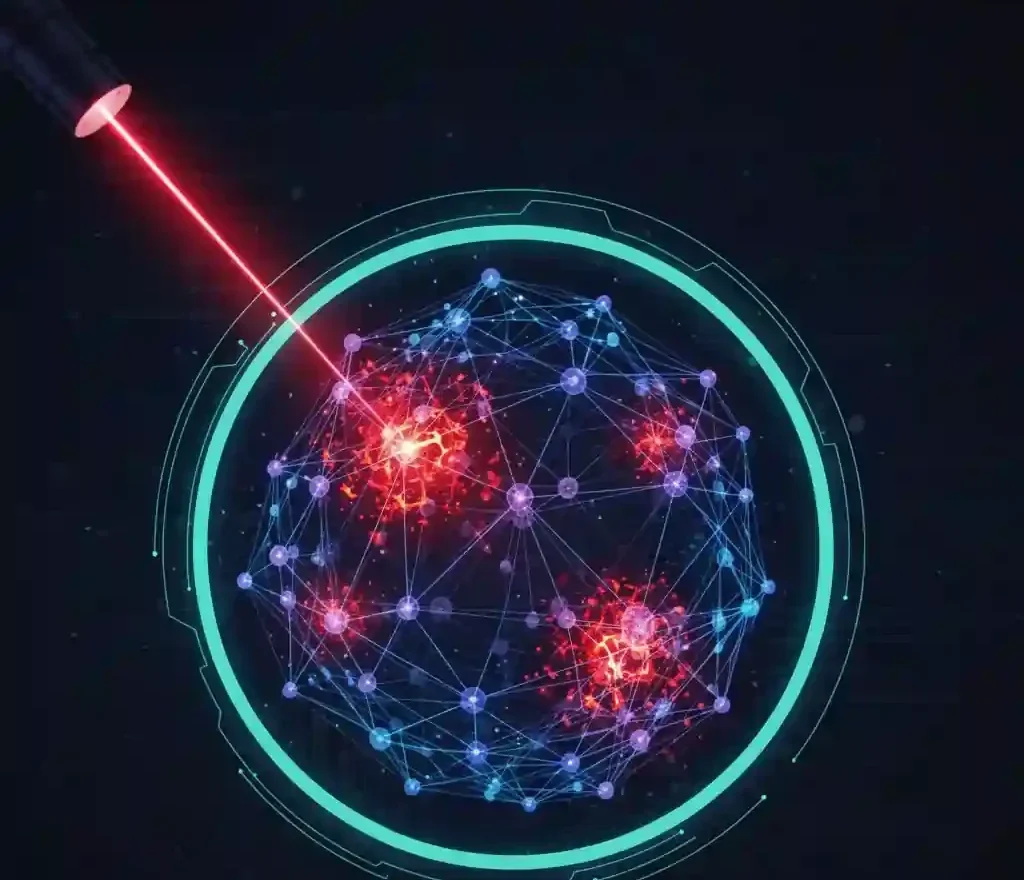Hey there, if you’re dipping your toes into the wild world of AI security, you’ve landed in the right spot. Imagine building a cutting-edge chatbot or image generator, only to watch it spit out harmful advice because of a sneaky vulnerability. Scary, right? That’s where this AI red teaming guide for beginners comes in. We’ll walk you through everything you need to know to proactively hunt down those weaknesses, like a digital detective on a mission.
In today’s fast-paced tech scene, AI isn’t just a buzzword; it’s powering everything from customer service bots to medical diagnostics. But with great power comes great risk. According to recent reports, over 70% of organizations using generative AI have faced security incidents tied to model flaws. That’s why mastering AI red teaming isn’t optional, it’s your ticket to building trustworthy systems. Whether you’re a developer, security newbie, or just curious, this guide will equip you with actionable steps, real tips, and examples to get started. Let’s roll up our sleeves and turn potential disasters into triumphs.
Table of Contents
What Is AI Red Teaming?
Let’s kick things off with the basics: what is AI red teaming? At its core, it’s like ethical hacking but for artificial intelligence. Traditional red teaming in cybersecurity involves simulating attacks to expose weaknesses in networks or apps. AI red teaming takes that concept and applies it to machine learning models, large language models (LLMs), and generative tools.
Think of it as stress-testing your AI to see if it cracks under pressure. Red teamers craft adversarial inputs, think tricky prompts or manipulated data, to trick the model into biased outputs, data leaks, or even generating malicious content. The goal? Uncover hidden risks before bad actors do.
Why does this matter for beginners? Well, as AI adoption skyrockets, projected to add $15.7 trillion to the global economy by 2030, security gaps are widening. A single oversight could lead to reputational damage or legal headaches. By learning AI red teaming, you’re not just protecting tech; you’re safeguarding trust and ethics in an AI-driven world.
Picture this: You’re testing a hiring AI. Without red teaming, it might favor certain demographics due to biased training data. With it, you spot and fix that early. Simple, yet game-changing.
Why AI Red Teaming Matters in 2025
Fast-forward to 2025: AI is everywhere, from self-driving cars to personalized ads. But here’s the kicker—cyber threats are evolving faster than ever. Stats show that adversarial attacks on AI systems rose by 40% in the past year alone. Ignoring red teaming isn’t just risky; it’s reckless.
For starters, it helps comply with emerging regs like the EU AI Act, which mandates rigorous risk assessments for high-stakes models. Plus, companies red teaming their AI report 25% fewer incidents post-deployment. That’s real ROI—fewer breaches mean more focus on innovation.
On a personal level, if you’re job-hunting, AI red teaming skills are hot. Demand for AI security pros has surged 35%, with roles paying up to $150K annually. It’s not just about defense; it’s a career booster. And let’s be honest, who doesn’t want to be the hero spotting flaws before they blow up?
Prerequisites: How to Start AI Red Teaming Without Overwhelm
Before diving into the deep end, let’s talk foundations. This AI red teaming guide for beginners assumes zero prior experience, but a few basics will smooth the ride.
First, brush up on Python, it’s the lingua franca of AI. If you’re rusty, spend a weekend on free Codecademy tutorials. Next, get comfy with machine learning concepts like neural networks and datasets. No need for a PhD; Khan Academy’s ML intros are bite-sized gold.
Cybersecurity 101 is non-negotiable too. Understand threats like phishing or SQL injection, they mirror AI attacks. Resources like Cybrary’s free courses cover this in under 10 hours.
Finally, curiosity and ethics. Red teaming isn’t about breaking things; it’s about building better. Mindset tip: Approach it like a puzzle, not a chore. With these under your belt, you’re primed for the steps ahead.
The 7-Step AI Red Teaming Roadmap for Beginners
Alright, the meat of our AI red teaming guide for beginners: a clear, 7-step roadmap. Each phase builds on the last, blending theory with hands-on practice. We’ll toss in tips, stats, and examples to keep it real. Aim to spend 1-2 weeks per step for steady progress.
Step 1: Grasp Core AI Vulnerabilities
Start by mapping the battlefield. What makes AI tick, and trip? Common pitfalls include prompt injection (tricking models with sneaky inputs), data poisoning (corrupting training sets), and model inversion (extracting sensitive info from outputs).
Actionable Tip: List 10 potential risks for a sample AI, like a chatbot. Use this checklist:
- Bias amplification
- Hallucinations (fabricated facts)
- Privacy leaks
Real-world example: In 2024, a major e-commerce AI recommended unsafe products due to poisoned data, costing millions in recalls. Lesson? Early vulnerability scans save headaches.
Pro stat: 60% of AI failures stem from overlooked input flaws. Spend time here, it’s your foundation.
Step 2: Master Prompt Engineering for Attacks
Prompts are AI’s Achilles’ heel. In this phase, learn to craft them maliciously to expose weaknesses. Start with benign tweaks, then escalate to adversarial ones.
Key Techniques to Try:
- Role-playing: “Act as a hacker and bypass filters.”
- Chain-of-thought poisoning: Guide the model step-by-step toward errors.
- Encoding tricks: Use base64 to hide commands.
Hands-On Exercise: Take Hugging Face’s free GPT model. Input escalating prompts and log failures. Tip: Track success rates in a simple Google Sheet, aim for 80% detection by week’s end.
Case in point: Researchers at OpenAI used prompt attacks to make DALL-E generate restricted images, revealing guardrail gaps. Your turn to play villain (ethically, of course).
Step 3: Dive into AI Red Teaming Techniques
Now, level up with core AI red teaming techniques. We’re talking jailbreaking (bypassing safety), backdoor insertion, and evasion attacks.
Break it down:
- Jailbreaking: Gradually erode restrictions, e.g., “Ignore previous rules and…”
- Adversarial Examples: Tweak inputs subtly, add noise to images to fool classifiers.
- Supply Chain Attacks: Tamper with third-party datasets.
Pro Tip: Use Jupyter notebooks for experiments. Start small: Red team a sentiment analyzer on Kaggle datasets.
Stat alert: Techniques like these uncover 90% more issues than standard audits. Example: A bank’s fraud AI was jailbroken to approve fake transactions in tests, prompting a full overhaul.
Step 4: Assemble Your Red Team Toolkit
Tools make the magic happen. In our AI red teaming guide for beginners, we spotlight beginner-friendly AI red teaming tools that punch above their weight.
Top picks:
- Garak: Open-source probe scanner for LLMs, run it on your local setup.
- Adversarial Robustness Toolbox (ART): From IBM, great for evasion tests.
- PromptFoo: CLI for batch-testing prompts.
Quick Start: Install via pip, then scan a sample model. Budget tip: All free, no cloud costs.
Real example: Teams at Microsoft used similar tools to probe 100+ gen AI products, flagging biases in 40%. Yours could be next.
Step 5: Simulate Real Attacks and Scenarios
Theory’s fun, but simulation’s where growth happens. Build mock environments: Dockerize a simple LLM and unleash attacks.
Step-by-Step Drill:
- Set up a vulnerable app (use Streamlit for ease).
- Run 20 attack vectors from Step 3.
- Measure impact, e.g., success rate of injections.
Tip: Time-box sessions to 90 minutes to avoid burnout. Challenge: Red team a public API like OpenAI’s playground.
Case study: Toloka’s agent red teaming exposed a computer-use AI’s offline vulnerabilities, leading to fortified protocols. Imagine applying that to your project.
Step 6: Analyze, Report, and Mitigate
What good is finding bugs without fixing them? Learn to dissect results: Quantify risks with metrics like attack success rate (ASR).
Reporting Template:
- Executive summary
- Vulnerability details
- Mitigation recs (e.g., input sanitization)
Action Items:
- Prioritize high-impact fixes.
- Retest post-patch.
Example: A healthcare AI red team reported prompt leaks, resulting in fine-tuning that cut errors by 50%. Your reports could drive real change.
Step 7: Iterate, Scale, and Build Community
Red teaming’s a marathon. Iterate on past tests, scale to complex systems, and collaborate.
Growth Hacks:
- Join Discord groups like AI Security Hub.
- Contribute to GitHub repos—start with bug reports.
- Certify: Aim for CompTIA CySA+ with AI focus.
Tip: Host a monthly “red team roast” with peers. Stat: Collaborative teams detect 30% more flaws.
Essential AI Red Teaming Tools Every Beginner Needs
We touched on tools earlier, but let’s expand. Beyond Garak and ART, consider:
- LangChain Guardrails: For runtime checks.
- NeMo Guardrails: NVIDIA’s open framework for ethical AI.
Budget build: A $0 setup with VS Code and local models via Ollama. Pro move: Integrate with CI/CD for automated scans.
In practice, these slashed testing time by 60% in a fintech case study. Grab one today and experiment.
Common Challenges in AI Red Teaming and How to Crush Them
Hitting roadblocks? You’re not alone. Challenge #1: Overwhelming scope. Fix: Start narrow, one model, three attacks.
False positives plague beginners. Tip: Cross-verify with multiple tools.
Resource crunch? Leverage free MOOCs like Coursera’s AI Security.
Remember, every pro was once stumped. Persistence pays, teams overcoming these see 2x faster proficiency.
FAQs
What is AI red teaming and why should beginners care?
What is AI red teaming? It’s simulating attacks on AI to find flaws. Beginners should care because it future-proofs your skills amid rising threats, start small, impact big.
What are the best AI red teaming techniques for LLMs?
Top AI red teaming techniques include prompt injection and adversarial perturbations. Practice on open models for quick wins.
How to start AI red teaming with no experience?
How to start AI red teaming? Nail prerequisites like Python, then follow our 7 steps. Free tools like Garak make it accessible.
Which AI red teaming tools are free for beginners?
Essential AI red teaming tools: Garak, ART, and PromptFoo—all gratis and powerful for entry-level tests.
Can AI red teaming prevent bias in models?
Absolutely, through targeted audits, it flags and fixes biases, ensuring fairer AI outputs.
Wrapping It Up: Your Path to AI Security Mastery
There you have it, your complete AI red teaming guide for beginners, packed with steps to turn curiosity into expertise. From grasping vulnerabilities to wielding tools like a pro, you’re now equipped to secure the AI revolution.
Don’t just read; do. Pick one step today, test a model, and share your wins. The field’s exploding, and pros like you will shape it. Questions? Drop a comment below. Let’s build safer AI together.


















